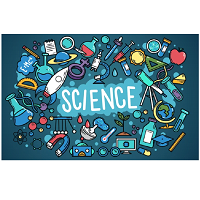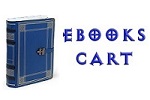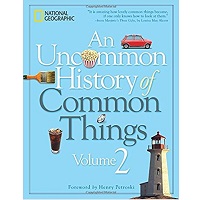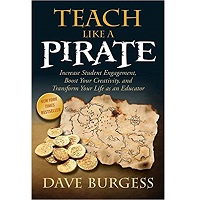7 Exclusive Tips to Make Your Science Book Stand Out

If you want to write a science book and also make a bestseller on the first go, you will have to do something outside the box. You know that standing out in a sea of information is no small feat. But first, you will have to know how you can make your book not just informative but truly captivating.
Also, how can you ignite curiosity and leave readers hungry for scientific knowledge? The question is pretty simple. Follow some effective tips outlined by industry experts and find a unique angle for your book from the very start.
It will help you create a literary experience that will captivate, educate, and inspire readers. Read on below to find the top 7 of those exclusive tips.
Find a Unique Angle
In a sea of scientific literature, offering a fresh perspective within your chosen field is not easy, but it can make your book a captivating standout. By finding a unique angle, you bring a new lens through which readers can view the subject matter.
It could involve presenting something like lesser-known research, challenging existing theories, or unveiling the untold stories behind scientific breakthroughs. This unique approach will not only spark curiosity but will also provide a fresh and thought-provoking experience for readers.
But the problem you will face is how to discover that unique angle. The easiest way to do this is to dive deep into niche topics and explore emerging research. You can also seek out the gaps in the existing literature and fill them with your original insights.
Find a Reputable Science Editor
While your scientific knowledge and expertise are the foundation of your book, an editor with a strong background in science can elevate your work to new heights of excellence and credibility. They will bring a fresh perspective to your manuscript and will ensure the accuracy of scientific content.
Moreover, science editors have the right skills to identify any inconsistencies or gaps in your arguments and suggest improvements to enhance clarity and readability. Find the services of a science editor once you have completed writing your book.
They will then translate complex concepts into clear and engaging language, ensuring that your book appeals to both experts and non-experts alike.
Use Storytelling Techniques
Science and storytelling may seem like unlikely partners, but merging the two creates a powerful combination that captivates readers and makes complex concepts more accessible. By incorporating storytelling techniques, you can engage readers on an emotional level and bring the wonders of science to life.
To make sure of this, you can mix up narratives, personal anecdotes, and real-life examples into your explanations to create a compelling narrative arc that keeps readers hooked from start to finish. This approach will humanize science and will allow readers to connect with the subject matter on a deeper level.
Also, they will not fall bored along the way but will rather enjoy your book.
Visualize Information Effectively
Science can be complex, but visual elements such as diagrams, charts, and illustrations can bridge the gap between technical concepts and reader understanding. If you think that any concept or argument is difficult to understand for your target audience, you can use visual elements to help readers grasp that idea.
In this context, you can consider utilizing infographics, timelines, and explanatory diagrams to simplify complex processes or relationships. High-quality illustrations can bring scientific phenomena to life, engaging readers and making your book visually captivating.
Remember, a picture is worth a thousand words, and in the case of a science book, it can be the key to unlocking understanding and engagement. By visualizing information effectively, you transform your book into a visually stimulating and intellectually rewarding experience for readers, making it stand out among other scientific publications.
Provide Real-World Applications
Yes, scientific knowledge is fascinating and interesting, but for a very limited number of people. Most readers are drawn towards books that demonstrate the practical relevance and impact of scientific principles on their daily life.
By showcasing these real-world applications, you bridge the gap between theory and everyday life. Explain how scientific concepts can be applied to solve problems, improve technology, or address societal challenges.
You can also share examples and case studies that demonstrate how scientific knowledge has shaped our world and continues to shape the future. Real-world applications create a tangible connection between readers and the subject matter. They inspire curiosity, spark interest, and show readers the value of scientific understanding.
By demonstrating the practical implications of science, you engage readers on a deeper level and help them appreciate the relevance and importance of the scientific principles you discuss.
Break Down Complex Concepts
As mentioned above, science books are not always interesting and attractive to common readers, especially when they involve complex theories and technical jargon. That’s why it is advised to simplify and break down these concepts into simple ones.
This way, you will be able to make your book more accessible and engaging. To do this, we advise you to first start with clear and concise language to explain each component, ensuring that readers can follow along without feeling overwhelmed.
After this, provide relatable examples, analogies, and visuals to illustrate the concepts in a way that resonates with readers. It will not only enhance reader comprehension but will also foster a sense of empowerment and curiosity.
Showcase Credible Sources
Science is all about research and peer-reviewed studies, so readers only value accuracy and reliability in scientific literature. By incorporating credible sources, such as reputable scientific journals, esteemed researchers, and well-documented studies, you establish the credibility of your book.
These sources provide authority to your claims, substantiate your arguments, and demonstrate that your work is rooted in sound scientific principles. Also, when readers encounter credible sources, they feel confident in the information presented and are more likely to trust your expertise.
You can use some of the most peer-reviewed articles to present as a credible source for your book. By using these sources, you can allow readers to explore further, delve into the scientific literature, and deepen their understanding of the subject matter.












